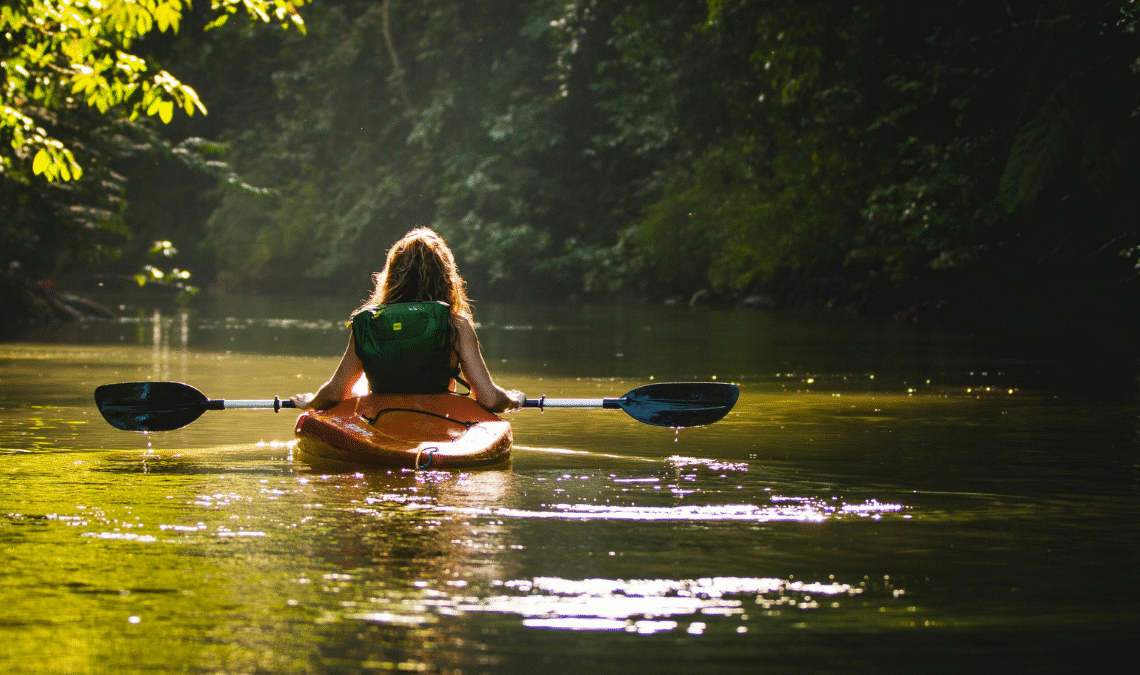In recent years, there have been quite a few Canadian snowbirds flocking to Costa Rica for various reasons – affordability, safety and culture. And as luck would have it, I know a couple of them, and asked what they thought of Costa Rica. Yoga instructor, Maxine Choy didn’t spend an entire winter but co-hosted a Yoga Retreat, her reply, “The people stood out to me the most – they were extremely friendly, polite and carried a quiet happiness about them”. This honest response confirms and reflects the country’s unofficial national motto, Pura Vida, which means pure life—imbued with the mindset of positivity and being grateful for the simple things. Can you see yourself immersed in that mindset for three or four months? I can. For another friend, a lawyer who works remotely from December to March, it’s all about the lifestyle; for him, it’s nature, the wildlife, and the people. He’s up at 6 a.m. and takes early morning walks on the beach. It feels like a different time, a different planet – taking him back 40 years. He passes dog owners enjoying their dogs frolicking in the water. The length of his stay allows him to observe the family-oriented, friendly and hard-working nature of the people. And there is nothing like the taste of a mango or a pineapple ripened naturally and eaten straight from the vine. Although his days are filled with work, the backdrop of a beautiful beach, and the energy of simplicity and gratitude that pervades the culture, balances out the stresses of his demanding career.
If their experiences have peaked your curiosity, check out some key points below to get you started on your research.
Costa Rica
Costa Rica, located in Central America, is bordered by Nicaragua to the north, Panama to the south, the Caribbean Sea to the east, and the Pacific Ocean to the west.
Costa Rica has two primary seasons: Dry Season (Summer) and Rainy Season (Green Season). However, temperatures remain warm year-round due to its tropical climate, with regional variations depending on elevation.
Required Documents to Enter:
Passport: Your passport must be valid for the duration of your stay.
Return or Onward Ticket: You’ll need to show proof of a return ticket or onward travel to another country.
Canadian passport holders do not need a consular visa to visit Costa Rica; their tourist visa is a stamp from immigration, valid for 180 days.
Weather:
Dry Season (December – April)
This is Costa Rica’s summer and high tourism season, with mostly sunny days and little to no rain.
Average temperatures vary by region:
Central Valley (San José, Alajuela, Heredia): 75–85°F (24–29°C)
Pacific Coast (Guanacaste, Puntarenas): 85–95°F (29–35°C)
Caribbean Coast (Limón, Puerto Viejo): 80–88°F (27–31°C)
Mountainous areas (Monteverde, Arenal): 60–75°F (15–24°C)
National Language: The official language of Costa Rica is Spanish.
Religion:
Approximately 70.5% of Costa Ricans identify as Roman Catholics, with 44.9% practicing and 25.6% non-practicing. Evangelical Protestants make up about 13.8% of the population, while 11.3% report no religious affiliation, and 4.3% belong to other religions.
Women’s Rights:
Costa Rica has made significant strides in promoting gender equality. Women have equal rights under the law, and the country has implemented policies to support women’s participation in politics, education, and the workforce. However, challenges such as wage gaps and domestic violence persist, and ongoing efforts aim to address these issues.
Vaccinations Required:
Travellers are advised to ensure routine vaccinations are up-to-date. Additionally, vaccinations for Hepatitis A and Typhoid are recommended. A yellow fever vaccination is required for travellers from countries with a risk of transmission of yellow fever.
Common Illnesses:
Mosquito-borne illnesses like Dengue fever and Zika virus are present in Costa Rica, though cases are relatively rare. Travelers are advised to use insect repellent, wear protective clothing, and stay in accommodations with proper screening.
Crime Rate:
The most common crimes in Costa Rica are theft and petty theft. Violent crime is less common. Tourists are advised to take standard precautions, such as not carrying valuables, avoiding poorly lit areas at night, and staying alert.
Food – National Dish/Local Staples:
The national dish of Costa Rica is “gallo pinto,” a breakfast dish consisting of rice and black beans stir-fried together, often served with eggs and sour cream or cheese. Another traditional meal is “casado,” which includes rice, beans, meat (such as beef, chicken, or fish), fried plantains, and a salad.
Cost of Living:
Currency: US Dollars.
Local Food: Dining at local eateries, known as “sodas,” is affordable, with meals averaging around $4.50.
Foreign Imports: Imported goods and luxury items can be more expensive than in North America or Europe.
Accommodation:
Planning a three to four-month stay in Costa Rica from December to April offers a variety of accommodation options, with costs varying based on location, property size, and amenities. Here’s an overview to assist in your planning:
1. Rental Prices by Region:
San José (Central Valley):
One-Bedroom Apartment: Approximately $800 to $1,500 per month.
Three-Bedroom Apartment: Ranges from $1,500 to $2,500 or more monthly.
Jaco (Central Pacific Coast):
One-Bedroom Apartment: Typically between $500 to $800 per month.
Three-Bedroom Apartment: Generally $800 to $1,500 or more monthly.
Tamarindo (North Pacific Coast):
One-Bedroom Apartment: Around $500 to $800 per month.
Three-Bedroom Apartment: Approximately $800 to $1,500 or more monthly.
Heredia (Central Valley):
One-Bedroom Apartment: Starts at about $400 to $700 per month.
Three-Bedroom Apartment: Ranges from $700 to $1,200 or more monthly.
Note: These figures are approximate and can vary based on specific property features and exact location within each region.
2. Seasonal Considerations:
The period from December to April is Costa Rica’s dry season, attracting many tourists and seasonal residents. This increased demand can lead to higher rental prices, especially in popular coastal areas. It’s advisable to secure accommodations well in advance to ensure availability and favourable rates.
3. Additional Costs:
Utilities: Expect to budget approximately $50 per month for electricity and $10 for water.
Internet: Monthly internet services typically cost around $40.
4. Rental Agreements and Deposits:
Long-term rentals usually require a security deposit, often equivalent to one or two months’ rent. Ensure that the terms regarding deposit return and any potential deductions for damages are clearly outlined in the rental agreement.
5. Alternative Accommodation Options:
Platforms like Airbnb offer monthly rental options, which can be convenient for shorter stays or for those seeking furnished accommodations. However, prices on such platforms may be higher compared to traditional rentals, especially during peak tourist seasons.
6. Recommendations:
Early Planning: Due to the high demand during the dry season, it’s recommended to start your accommodation search several months in advance.
Local Real Estate Agents: Engaging with local real estate professionals can provide access to a broader range of rental options and assist in navigating lease agreements.
Visit Before Committing: If possible, visiting Costa Rica prior to your extended stay can help in selecting a region and accommodation that best fits your preferences and budget.
Costa Rica offers a rich cultural experience, diverse cuisine, and a relatively affordable cost of living, making it an attractive destination for travelers and expatriates alike.
Things to Do:
If you’re staying long-term in Costa Rica (3-4 months or more), you have plenty of opportunities to explore, immerse in local culture, and live like a local rather than just a tourist. Here are some great activities and experiences for long-term visitors:
Nature & Outdoor Adventures
Costa Rica is known for its diverse ecosystems, making it perfect for nature lovers:
Hiking & National Parks – Explore Arenal Volcano, Manuel Antonio, Corcovado, and Monteverde Cloud Forest.
Beaches & Surfing – Tamarindo, Santa Teresa, and Dominical are perfect for surfers.
Wildlife Watching – See sloths, monkeys, toucans, and sea turtles in Cahuita and Tortuguero.
Waterfalls & Hot Springs – Visit La Fortuna Waterfall and relax in Arenal’s natural hot springs.
Scuba Diving & Snorkeling – Dive in Caño Island or the Bat Islands for vibrant marine life.
Cultural & Local Experiences
Costa Rica has a rich culture influenced by Spanish, Indigenous, and Afro-Caribbean traditions:
Take Spanish Classes – Enroll in language schools in San José, Heredia, or Tamarindo.
Attend Local Festivals – Experience the Palmares Festival (January) or Envision Festival (February).
Explore San José’s Museums & Markets – Visit the National Museum, Gold Museum, or Central Market.
Live Like a Local – Shop at ferias (local farmers’ markets) and enjoy sodas (small, local eateries).
Join a Cooking Class – Learn to make Gallo Pinto, Casado, and Ceviche.
Wellness & Slow Living
Costa Rica is a top destination for health, wellness, and mindful living:
Yoga & Meditation Retreats – Join retreats in Nosara, Montezuma, or Uvita.
Holistic & Alternative Healing – Try sound healing, cacao ceremonies, or spa treatments.
Blue Zone Lifestyle – Experience Nicoya Peninsula’s longevity culture with a focus on healthy eating, movement, and stress-free living.
Social & Community Engagement
For a more meaningful long-term stay, consider giving back or integrating with locals:
Volunteer – Help with wildlife conservation, sea turtle rescue, or sustainable farming.
Join Expat & Digital Nomad Groups – Meet others in towns like Tamarindo, Santa Teresa, and Puerto Viejo.
Take Up a New Hobby – Surfing, dancing, coffee farming, or learning to play the marimba.
Weekend & Extended Trips
Costa Rica’s small size makes weekend getaways easy:
Nicaragua Trip – Cross the border to visit Granada and Ometepe Island.
Panama Escape – Head to Bocas del Toro for Caribbean vibes.
Remote Getaways – Explore Osa Peninsula, Rio Celeste, or Chirripó National Park (Costa Rica’s highest peak).
Sources: Expatfocus, Home
If you’re contemplating if snow birding is for you, check out : Snowbird Adventures:Perks of Wintering in Warmer Climates
Other destinations to consider:






